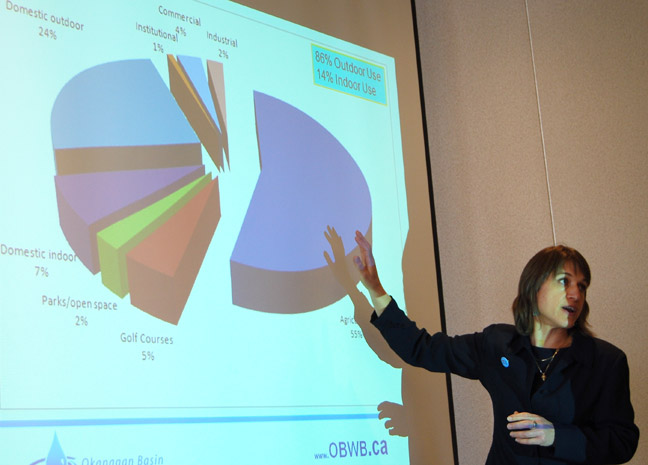The Okanagan Basin Water Board (OBWB) unveiled its homegrown Streamlined Water Use Reporting Tool (SWURT) to the public last Friday in West Kelowna, British Columbia.
“SWURT will help our water utilities keep an ongoing record of how much water we are using,” said Dr. Anna Warwick Sears, OBWB’s executive director. “This is critical for managing our water supplies and preparing for the shortages that are expected with a growing population and climate change. We’re also very pleased to know that this tool will likely be adopted by the rest of the province in the months ahead, helping ensure a sustainable water supply for all British Columbians.”
In speaking to the need for SWURT, Warwick Sears noted that, the average Okanagan resident uses two times more water than the average Canadian. “We also know that we live in a dry climate and have less water available per person in the Okanagan than just about anywhere in Canada,” she said. “Each of us needs to do a better job of conserving water—and being WaterWise. SWURT will help utilities do their part to plan their water use wisely.”
“In the past, water-use reporting required water utilities to fill out a form once a year and submit it to the province,” explained Bob Hrasko, vice-chair of the Water Supply Association of B.C. and Black Mountain Irrigation District’s (BMID’s) administrator.
In addition, utilities would be asked for repeat requests for information from different provincial ministries. “The process wasn’t efficient, the information wasn’t timely, and it did not help us manage our regional water resources. This tool is a significant step forward,” added Hrasko, whose irrigation district was one of several large Okanagan water utilities instrumental in SWURT’s development.
“The SWURT tool will allow utilities to provide current water use data and access historic data for trending,” Hrasko said. “And just as importantly, we’ll be able to see what other water utilities in the valley are extracting, helping us work together and manage our common water resource. Over time this inventory of information will also help us understand the Okanagan’s changing hydrology. This is very worthwhile and I hope the province continues to invest in this tool and eventually implement it province-wide.”










[…] This post was mentioned on Twitter by Canadian Water, waterca and Glynn Skerratt, rdrwa. rdrwa said: RT @CanadianWater Okanagan Basin Water Board releases water use reporting tool: http://bit.ly/gly5dF […]
[…] This post was mentioned on Twitter by Canadian Water, waterca and Glynn Skerratt, rdrwa. rdrwa said: RT @CanadianWater Okanagan Basin Water Board releases water use reporting tool: http://bit.ly/gly5dF […]